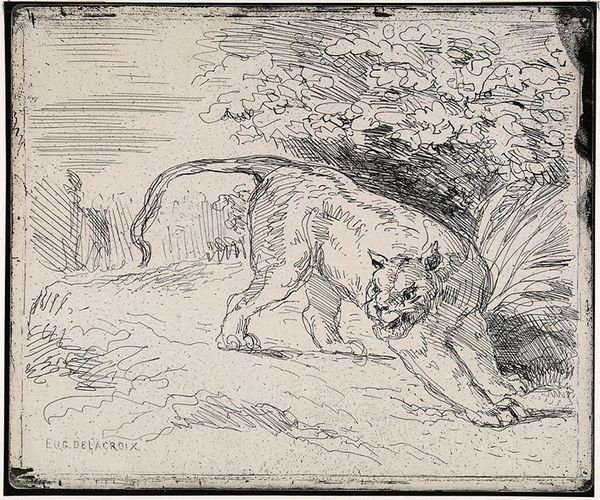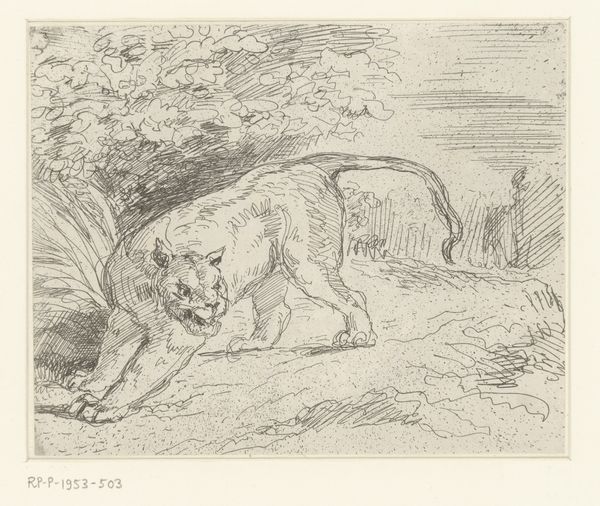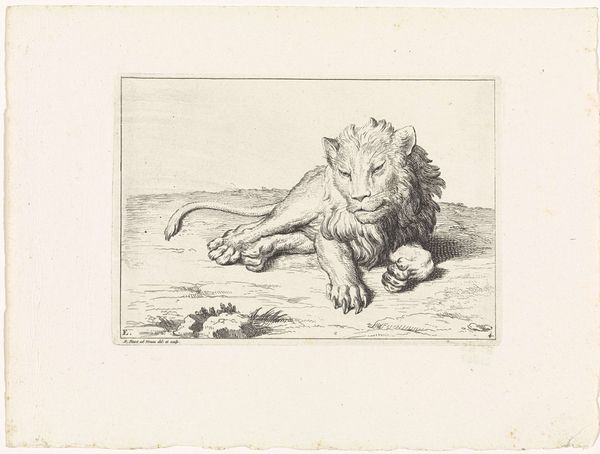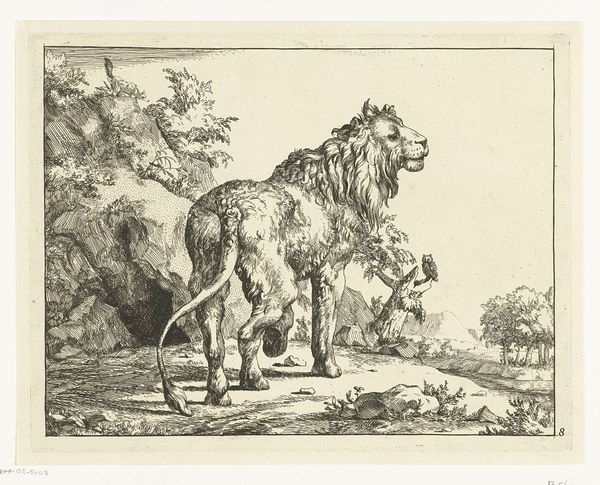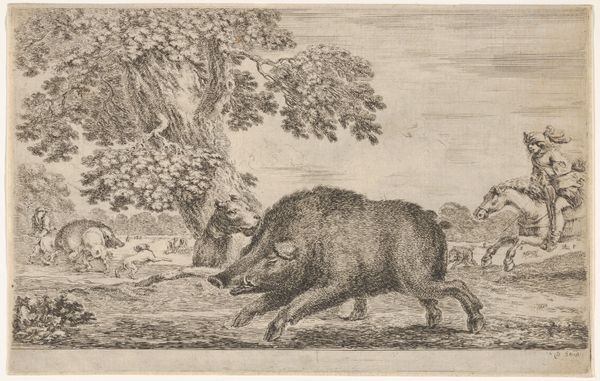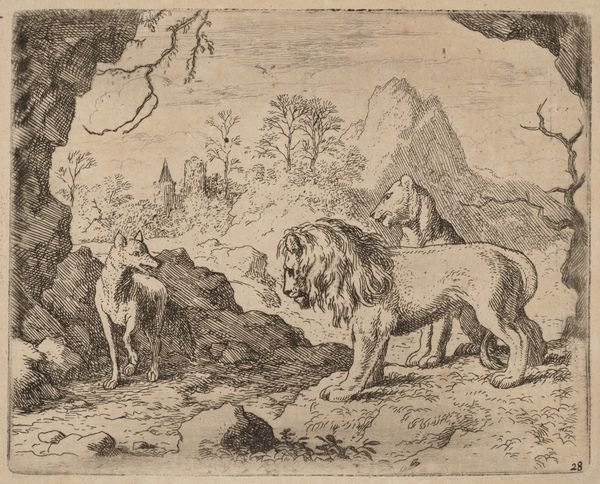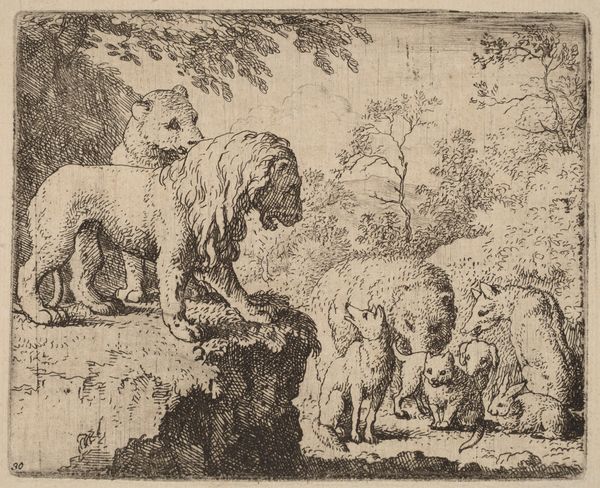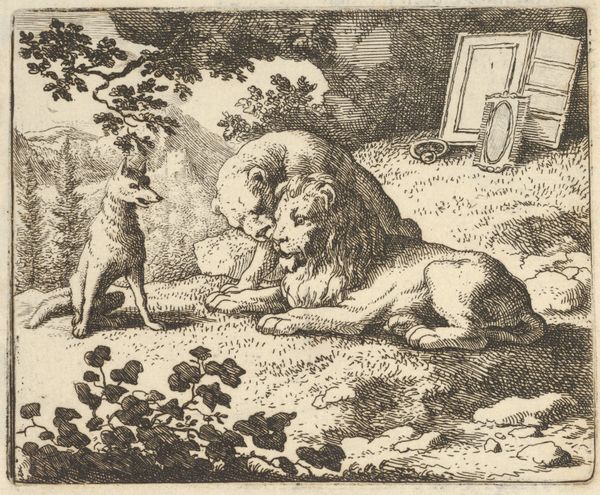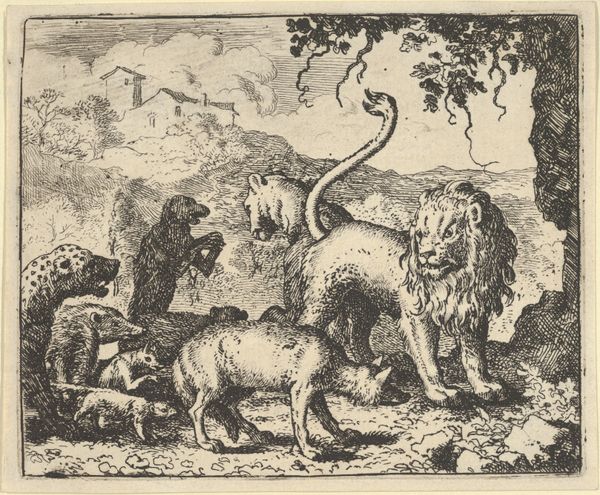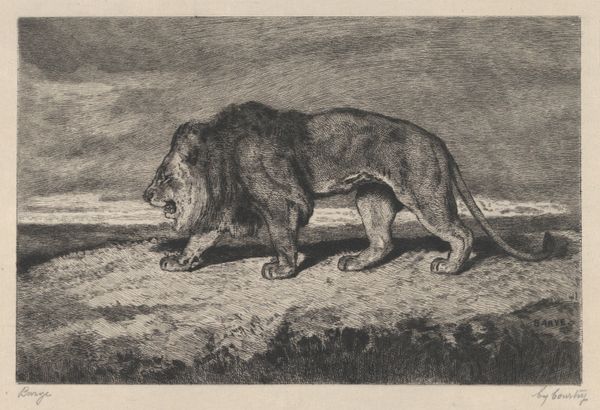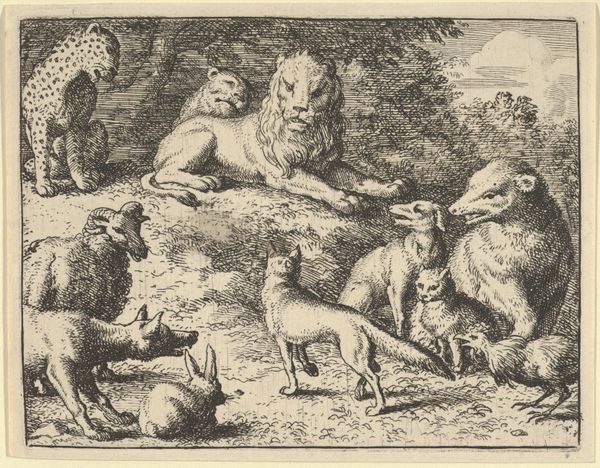
drawing, print, etching, paper
#
drawing
# print
#
etching
#
landscape
#
figuration
#
paper
#
romanticism
#
line
Dimensions: 158 × 191 mm (image); 167 × 201 mm (plate); 170 × 205 mm (sheet)
Copyright: Public Domain
Art Historian: Here we have "Tiger Ready to Spring", a print on paper by Eugène Delacroix. It's currently held here at the Art Institute of Chicago. Art Historian: Immediately, there's a potent energy radiating from this image. The tiger feels poised, a raw symbol of untamed power about to be unleashed. The sketchy lines only amplify the animal’s coiled tension. Art Historian: Delacroix was deeply involved in Romanticism. You can see that influence in his focus on intense emotion and exotic subjects, both of which challenged the more restrained Neoclassical style that preceded it. The print medium made it more widely accessible too, democratizing art to some extent. Art Historian: Absolutely. Tigers themselves carry so much symbolic weight – in many cultures they represent courage, strength, and even destruction. And that's interesting, given the turbulent political climate in France at the time. Delacroix must have known these associations would strike a chord. Art Historian: Indeed. His contemporaries would surely have read his images in the context of France’s shifting power dynamics after the Revolution and the Napoleonic era, constantly navigating social upheaval and the old guard. Even the exoticized landscape hints at escapism from the daily life in Paris. Art Historian: There’s a universal recognition of the animal's barely contained aggression and stealthy capability in Delacroix's line work. A collective cultural understanding—passed down for generations—adds complexity. The tiger reminds us that power resides not just in brute force but in stillness, control, and anticipation. Art Historian: It seems the art-historical contexts only adds another dimension to those cultural connotations. Ultimately, the artwork asks, and even challenges, its viewers to interpret the significance for themselves. Art Historian: What is conveyed so expressively becomes much deeper when we think about these contextual layers. I leave with such contemplation in mind, and how symbolism transcends artistic expression.
Comments
No comments
Be the first to comment and join the conversation on the ultimate creative platform.
